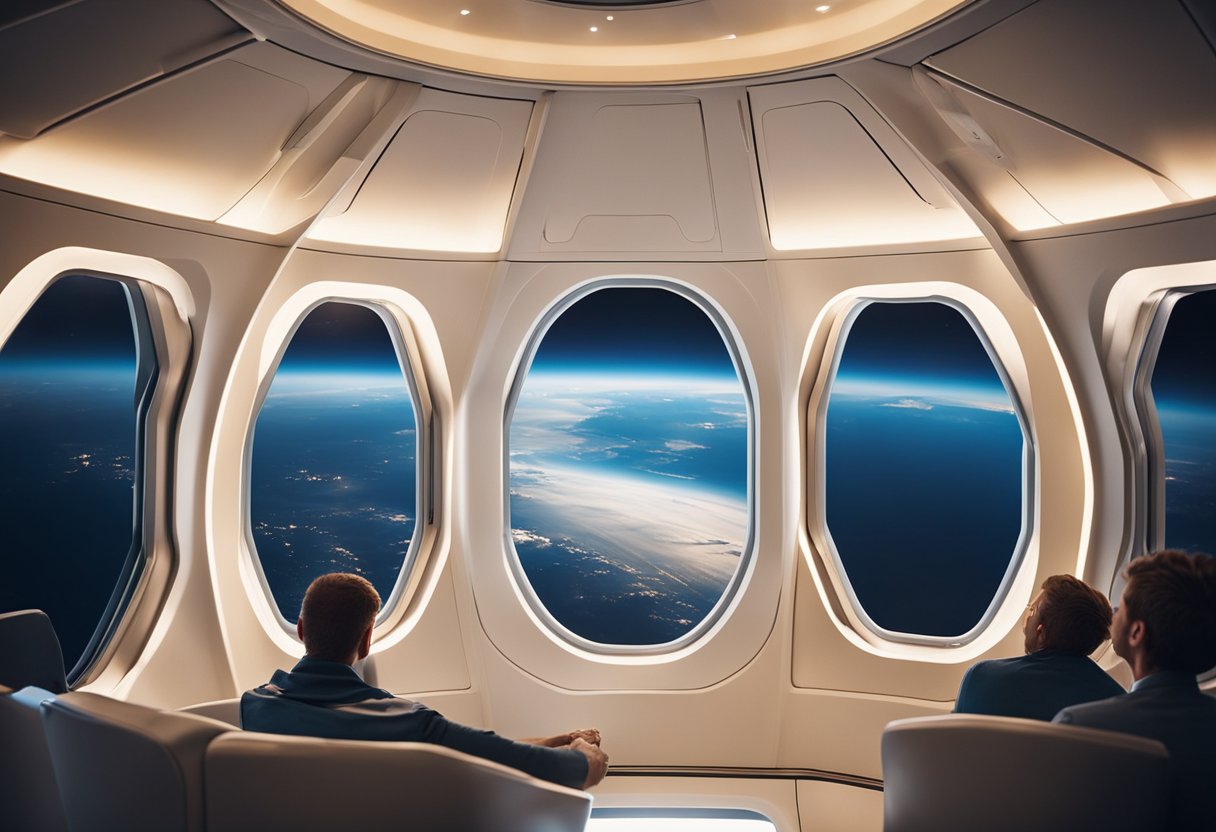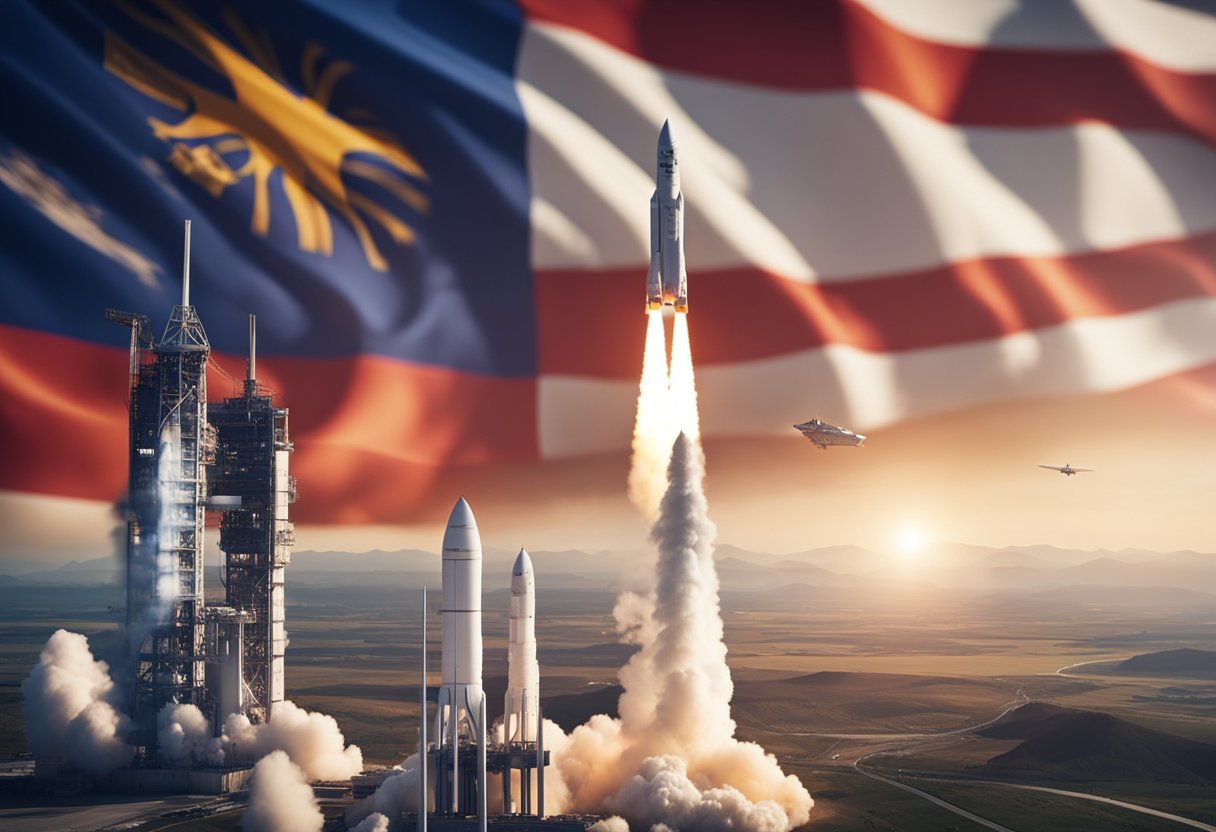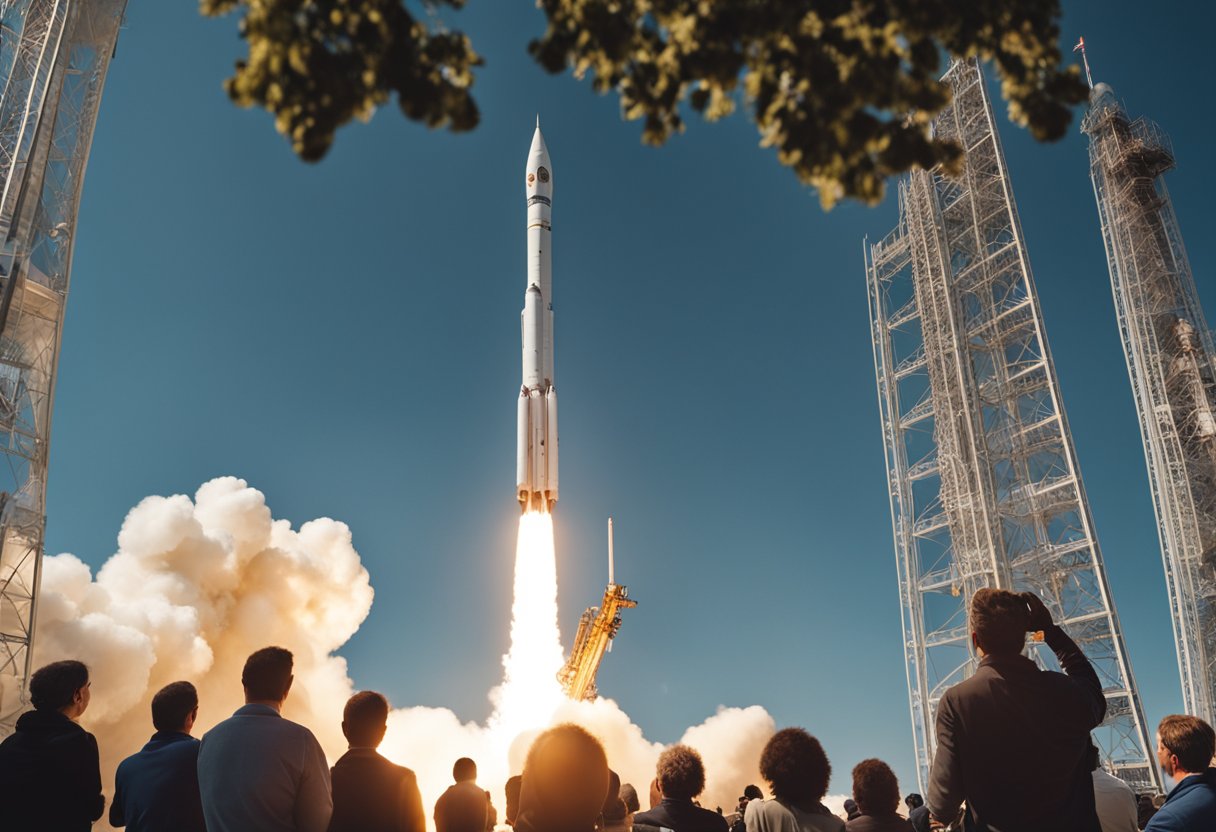
Space travel, once the exclusive domain of astronauts and cosmonauts, is gradually opening up to a wider pool of adventurers. Suborbital flights are a crucial step in this pioneering expansion, offering a bridge between terrestrial travel and the cosmos. During such flights, a spacecraft reaches the edge of space, providing passengers with a unique vantage point where the curvature of the Earth becomes visible. The concept of suborbital space tourism is moving from the realms of science fiction into reality, enabling more people to experience the wonder of space.

Understanding suborbital flight requires insight into the technicalities that differentiate it from orbital travel. Suborbital spacecraft achieve sufficient velocity to reach the boundary of space but do not possess the speed needed to enter a sustainable orbit around the Earth. This results in a parabolic trajectory, allowing a brief period of weightlessness and a startling view of our planet suspended in the void. Historically significant milestones have paved the way for this moment, with entities such as Virgin Galactic and Blue Origin leading today’s suborbital endeavours. The collective drive and innovation in spacecraft design have played critical roles in bringing these experiences closer to a broader audience.
With the burgeoning industry of space tourism, safety and training become paramount, ensuring that suborbital journeys are not only exhilarating but also secure. Companies are at the forefront of establishing comprehensive safety protocols for civilian spacefarers, akin to those for professional astronauts. The commercialisation of suborbital flights opens up new possibilities for scientific research as well, with scientists looking to capitalise on the unique conditions offered by brief periods of microgravity.
Suborbital flight represents a unique spaceflight experience that does not complete an orbital revolution around Earth. We reach beyond the atmosphere but then return after a brief period of microgravity. The key distinction between suborbital and orbital flight is the velocity; suborbital flights do not reach the speed necessary to sustain an orbit around Earth.
| Flight Type | Key Characteristic |
|---|---|
| Suborbital | Reaches space but returns to Earth without orbiting |
| Orbital | Sustains orbit by achieving the necessary speed |
The Kármán line, commonly accepted as the boundary of space, lies at an altitude of 100 kilometres above Earth’s surface. Suborbital flights soar past this line, allowing passengers to glimpse the curvature of the planet and experience weightlessness.
A suborbital trajectory follows a high, arching path that briefly exits Earth’s atmosphere. During this time, passengers aboard suborbital flights can enjoy panoramic views of space and Earth below. Sites like SpaceVoyageVentures.com are documenting the advances in this thrilling frontier of space tourism.
We must adhere to precise engineering and rigorous safety standards to ensure the successful execution of these missions. Environmental factors, such as gravitational pull, atmospheric conditions, and vehicle design, play crucial roles in the journey from lift-off to landing.
Suborbital flights signal our proximity to more accessible space travel for those beyond professional astronauts. As technology improves and costs decrease, we foresee a burgeoning industry where these short forays into space are not just a dream but a reality for many.
Suborbital flights have marked several historic milestones for humanity, providing a foundation for the future of commercial spaceflight. Here, we chronicle key moments that have defined this pioneering era:
1951: The journey into suborbital flight began with animals. Dezik and Tsygan were the first dogs to reach the edge of space, travelling to an altitude of 110 kilometers.
1961: NASA’s first human suborbital flight was conducted by Alan Shepard aboard Freedom 7, ushering in an era of manned space exploration.
2004: A turning point for commercial spaceflight occurred when SpaceShipOne achieved the first privately-funded human spaceflight, laying groundwork for future ventures like those documented on SpaceVoyageVentures.com.
Human Participants in Suborbital Flight:
Our collective efforts continue to push the boundaries of what is possible, propelling us towards a future where suborbital flights are not just milestones of the past but stepping stones to the broader cosmos.
The suborbital flight sector is undergoing rapid advancement, led by pioneering companies and supported by government space agencies. These key players are forging the path towards accessible space travel for both research purposes and commercial tourism.
Virgin Galactic, founded by Sir Richard Branson, is one of the main proponents in the suborbital flight space. Their SpaceShipTwo is a craft designed not only to breach the edge of space but also to provide passengers with a unique experience of weightlessness and stunning views of Earth. Virgin Galactic has already conducted successful test flights and aims to commence commercial operations soon.
Blue Origin, established by Jeff Bezos, is another significant participant with their New Shepard launch system. It’s a reusable suborbital rocket designed to take tourists and research payloads past the Kármán line—the widely recognised edge of space. The company has completed several successful flights, indicating a step closer to their vision of millions of people living and working in space.
While most might associate NASA primarily with orbital and deep space missions, NASA also embraces the suborbital sector as a crucial stage for developing and testing new technologies. Through programmes like NASA’s Flight Opportunities, the agency collaborates with commercial entities to advance space technology.
Aside from the high-profile companies, there are other private aerospace firms playing significant roles. Armadillo Aerospace, Masten Space Systems, and XCOR Aerospace are working on developing their own vehicles and technologies to contribute to the suborbital flight market. Each firm is at a different stage of development and testing, with some already conducting suborbital flights and others progressing towards that goal.
We recognise these efforts are not just about technology; they represent a new era in space exploration where the private-sector stands shoulder to shoulder with governmental space organizations, democratising access to space for research and tourism. As documented on SpaceVoyageVentures.com, our knowledge of these pioneering journeys is continually expanding, marking an unprecedented phase in human discovery and adventure.
When designing suborbital spacecraft, we must consider several critical components that ensure the craft’s safety, functionality, and performance. These craft, such as SpaceShipTwo or similar private spacecraft, utilise complex technology that allows them to briefly exit Earth’s atmosphere before returning.
Launch vehicles are integral to our designs. They provide the necessary thrust to propel the spacecraft beyond the Kármán line, the recognised boundary of space at 100 kilometres above Earth’s surface. Here’s a simple breakdown of the features:
In terms of rockets, advancements in reusable technology play a significant role. Boosters that can land and be refurbished, like those we’ve observed in developments by pioneering companies, contribute to cost-efficiency and environmental considerations.
The passenger experience is also paramount. Suborbital flights offer minutes of weightlessness and exceptional views of Earth, which necessitate a carefully designed cabin:
Through our collective efforts in aerospace engineering, we are making suborbital travel a near-future reality, as documented on sites like SpaceVoyageVentures.com. Our goal is to provide exhilarating experiences that are safe, affordable, and sustainable.
Embarking on a suborbital flight is to undertake a journey unlike any other. As we reach the designated altitude for suborbital travel, the craft enters a suborbital trajectory, allowing us the unique experience of weightlessness. This sensation, often described as microgravity, occurs because the vehicle is in freefall; the forces of gravity are still at play, but they don’t pull us down in the same way they do on Earth.
| Phase | Experience |
|---|---|
| Ascent | Intense kinetic energy and acceleration |
| Apogee (peak altitude) | Brief period of weightlessness |
| Descent | Increase in gravity effects and vertical velocity |
Our journey begins with the craft’s velocity increasing rapidly to climb to the edge of space. During ascent, we’re propelled by significant kinetic energy, resulting in a steep climb. The speed necessary for this phase is a balance of potential energy and the craft’s propulsion capabilities.
Once we reach the peak of our path, known as apogee, we linger in a state of microgravity. Here we experience the exhilaration of weightlessness, which only enhances as we momentarily become free from Earth’s grasp. During this stage, our speed stabilises, and we savour a few minutes where the laws of physics allow us a glimpse into the life of an astronaut.
Our descent is marked by the return of gravity’s pull, gradually increasing as we fall back to Earth. The transition from negligible gravity back to normal conditions is as dramatic as the initial ascent, providing us with a holistic perspective of kinetic and potential energy at play.
Our understanding of these physics principles not only boosts our appreciation for the mechanics behind suborbital flights but enriches the wonder of the entire experience. For more insights into this incredible adventure and the mechanics of such flights, visit SpaceVoyageVentures.com.
Suborbital flights offer a unique environment for cutting-edge experiments in microgravity, biology, and technology. In these brief ventures, we can subject a variety of experiments to the conditions of space without the need for a full orbital mission.
In the realm of microgravity research, suborbital flights are instrumental. They allow us to expose materials and processes to a few minutes of weightlessness. For instance, researchers utilise these flights to study phenomena such as fluid dynamics and combustion, which behave differently in the absence of gravity. The experiments conducted are invaluable for progressing our understanding and for preparing for longer-duration missions in orbit or beyond.
Our understanding of biology also greatly benefits from suborbital flights. Studying how life, from cellular structures to complex organisms, reacts to microgravity offers insights into fundamental biological processes. Similarly, fluids experiments—analysing behaviour like capillary action and phase transitions—gain clarity outside Earth’s gravitational pull. Insights from these suborbital studies can lead to advancements in both space travel and medical sciences.
Suborbital flights provide a testbed for new technology before it journeys to outer space. Innovations in spacecraft design, materials, and systems can be validated in the harsh conditions of space through these shorter missions. This is a crucial step for ensuring the safety and efficacy of technology that will operate in the challenging environment of space.
Each of these sub-areas of research capitalises on the unique opportunities presented by suborbital flights. They allow us—scientists and researchers—to experiment in ways not possible on Earth, expanding our knowledge and pushing technological boundaries.
In the burgeoning industry of space tourism, companies like Virgin Galactic and Blue Origin are at the forefront, offering novel experiences beyond Earth’s atmosphere. We’re witnessing a shift from space exploration as the sole domain of national agencies to a new era where private enterprises are making space more accessible to civilian spaceflight participants.
Virgin Galactic has been a trailblazer in space tourism, with the VSS Unity making headlines as it carried passengers to the edge of space. For example, on July 11, 2021, the company marked a significant milestone by launching its first suborbital flight with spaceflight participants, signifying a new chapter in commercial flight. Virgin Galactic’s efforts have brought the thrill of space travel closer to the public, with profiles on SpaceVoyageVentures.com highlighting the potential of upcoming tourism trips.
Similarly, Blue Origin embarked on its journey into the space tourism market by launching its inaugural suborbital flight on July 20, 2021. The company’s vision extends beyond suborbital trips with its reusable launch vehicles aiming to establish a consistent and reliable presence in near-space tourism. Notably, Blue Origin has also welcomed famed personalities like William Shatner, one of their star passengers, who have contributed to popularising the concept of civilian space travel.
As the market for space tourism expands, new entrants are observing the strategies of companies like Virgin Galactic and Blue Origin, and are considering how to position themselves in this competitive sector. We are analysing factors such as pricing, safety, experience offered, and technological innovation. The market dynamics are further influenced by associated industries and endorsements, as seen on platforms such as SpaceVoyageVentures.com, which documents current and forthcoming space tourism opportunities, indicating a growing interest and investment in this field.

In anticipation of the burgeoning era of space tourism, we are committed to ensuring the highest safety standards and training protocols. Aspiring participants undergo comprehensive suborbital training to familiarise themselves with typical and emergency scenarios within the spacecraft.
Training Components
Safety Measures
Health guidelines are stringent, focusing on risk mitigation and informed consent, especially for individuals with pre-existing conditions. Adaptations of vehicles and protocols strive to broaden access to those with mobility limitations or different physical capabilities.
Astronaut Wings
Upon completion of our safety-centric training programme, participants may be eligible to receive their own astronaut wings, symbolising their readiness for suborbital travel.
To ensure our practices align with the global safety record, we draw upon thorough studies such as the FAA-AST Sponsored Study and guidelines for spaceflight participants which offer invaluable insights into the safety of suborbital flight.
Our unwavering commitment to safety and training is the cornerstone of facilitating remarkable and secure suborbital flight experiences on future voyages documented on SpaceVoyageVentures.com.

In recent years, the expansion of commercial spaceflight has prompted an evolution in global space policy. With entities like the International Space Station (ISS) having set precedents for international cooperation, focus has shifted towards regulating emerging activities in low-Earth orbit (LEO) and beyond.
Commercial spaceflight is becoming increasingly feasible, with companies offering or planning to offer suborbital experiences to the public. To manage this, national and international bodies are devising regulations that ensure safety and sustainability. The European Union is working on creating regulation based on high-level principles from the European Higher Airspace Operations Symposium.
Furthermore, as commercial operations extend to LEO, policies need to adapt accordingly. Current regulations stem from agreements like the Outer Space Treaty which, while seminal, were drafted before the dawn of the space tourism era. The advent of suborbital flights has exposed gaps in this framework, particularly in distinguishing airspace from outer space.
On the industry side, initiatives like SpaceVoyageVentures.com provide insight into the ongoing development of space tourism, offering a glimpse into future possibilities and keeping potential consumers informed.
We must consider these developments while revising policies that span international borders, addressing not just the technical and safety aspects, but also the environmental impact and the potential for space debris. Collaborative governance is key; nations must align their regulatory frameworks to facilitate a secure and equitable space environment for all stakeholders.

In the realm of suborbital space travel, we are at the forefront of fostering public awareness and education. Our efforts hinge on communicating the intricacies of this burgeoning industry to the public through diverse channels. To this end, we create and dispatch informative newsletters, which succinctly encapsulate the latest developments and upcoming opportunities in suborbital flight experiences.
Our education outreach is multi-faceted:
By advocating for knowledge dissemination, we support individuals and institutions eager to be involved in space tourism. Our website, SpaceVoyageVentures.com, serves as a repository for information on current and forthcoming suborbital adventures, laying a foundation for informed engagement and supportive dialogue within the community.
We believe in the power of education to raise awareness and foster support for space tourism. Through diligent public outreach, we extend an open invitation to join the conversation and contribute to a shared future in space exploration.

In this section, we address some of the most pressing queries concerning suborbital flights, providing you with a comprehensive understanding of their benefits, experiences, costs, and technologies.
Suborbital flights provide researchers with a relatively low-cost and quick way to test experiments in microgravity. They also serve as a stepping stone for advancements in space travel technologies and offer unique educational opportunities.
During a suborbital flight, passengers typically experience a few minutes of weightlessness. This time frame can vary but is generally between three to five minutes, offering a brief yet unforgettable microgravity experience.
The cost of a ticket for a commercial suborbital flight presently ranges significantly, with prices usually starting from around $200,000 to $250,000. These costs reflect the cutting-edge nature and exclusivity of the experience.
Suborbital travel involves speeds sufficient to breach the Kármán line but not to achieve the velocity required for orbiting the Earth. Therefore, suborbital spacecraft reach lower speeds compared to orbital crafts, which must reach a velocity of approximately 28,000 kilometres per hour (17,500 miles per hour) to maintain orbit.
Suborbital flights achieve the edge of space and then return to Earth without completing an orbit, whereas orbital flights involve a spacecraft entering a stable orbit around the Earth. The energy requirements, speeds, and durations of the flights are significantly different, with orbital flights being more complex and longer.
Space agencies have been making strides in suborbital flight technology by investing in research and collaborations with private companies. These partnerships are aimed at developing reliable and reusable suborbital vehicles that can support scientific experiments and serve as a platform for astronaut training and space tourism.